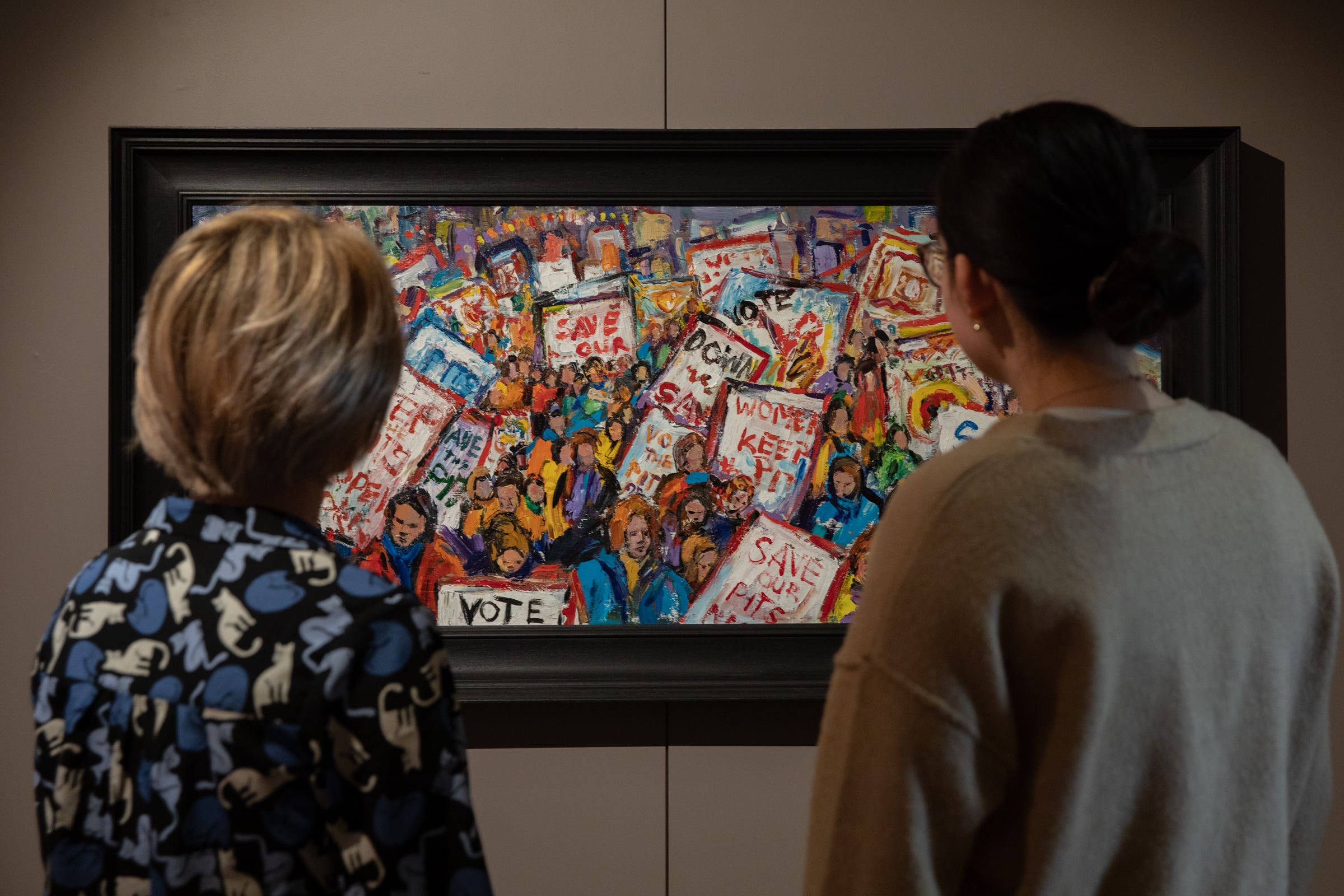New art exhibition on demise of coal mining
The exhibition coincides with the 40th anniversary of the 1984-85 miners’ strike.

Your support helps us to tell the story
From reproductive rights to climate change to Big Tech, The Independent is on the ground when the story is developing. Whether it's investigating the financials of Elon Musk's pro-Trump PAC or producing our latest documentary, 'The A Word', which shines a light on the American women fighting for reproductive rights, we know how important it is to parse out the facts from the messaging.
At such a critical moment in US history, we need reporters on the ground. Your donation allows us to keep sending journalists to speak to both sides of the story.
The Independent is trusted by Americans across the entire political spectrum. And unlike many other quality news outlets, we choose not to lock Americans out of our reporting and analysis with paywalls. We believe quality journalism should be available to everyone, paid for by those who can afford it.
Your support makes all the difference.An art gallery is launching a new exhibition exploring the demise of coal pits, the miners’ strike and the impact on local communities.
The Last Cage Down is being held at the Mining Art Gallery, in Bishop Auckland, County Durham from Friday until October 6.
Coinciding with the 40th anniversary of the 1984-85 miners’ strike, the exhibition brings together works of art portraying the declining years of the coal mining industry and the way of life before it was lost.
Exhibits include Robert Olley’s Orgreave after Guernica, depicting a violent confrontation on 18 June 1984, between pickets and police, and Barrie Ormsby’s Crucified Miner.
Speaking about his work, Barrie Ormsby said: “Before the miners’ strikes, most of my paintings were a response to the natural landscape around me, in West Durham, and although I have continued to work with the landscape, the social landscape has come to the fore.
“The artist cooperative I was a part of for 30 years, supported miners and their families during the strike through food distribution.
“Painting helped me process the sociopolitical enormity of the strikes. Through painting and thinking, I understood that this was a conflict between the collective and the communal, and the individual and the state.
“The miners’ defeat was the first domino to fall, knocking down the collective efforts of working people one by one – from dismantling trade unions to zero contracts. The strikes began 40 years ago but the impact is still felt today.”
The exhibition also features pieces from the gallery’s own collection, such as Marjorie Arnfield’s Women Protesting, a vibrant painting of women protesting with placards against pit closures in the 1980s, and several works from Durham-based coal miner and artist Tom McGuinness.
The Gallery’s founders, Gillian Wales and Robert McManners, said: “This exhibition is a poignant reminder of the struggles and resilience of our mining communities.
“Through the eyes of these artists, we are given a window into the turbulent times of the miners’ strike and the slow demise of the industry.”